World War II - Eastern Front - Chronology
Kursk: Summer 1943
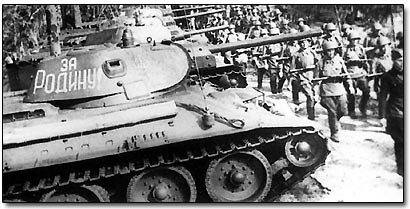
After the failure of the attempt to capture Stalingrad, Hitler was nervous about any attempt to pinch off the Kursk salient.
He knew that in the intervening six months the Russian position at Kursk had been reinforced heavily with antitank guns, tank traps, land mines, barbed wire, trenches, pillboxes, artillery and mortars.
But if one last great blitzkrieg offensive could be mounted, just maybe the Soviets would ease off and attention could then be turned to the Allied threat to the Western Front.
Although the Germans knew that the Red Army's massive reserves of manpower had been bled dry in the summer of 1941 and 1942, the Soviets were still re-equipping, simply by drafting the men from the regions recaptured.
Under pressure from his generals, Hitler bit the bullet and agreed to the attack on Kursk.
When the Germans began the operation, it was after months of delays waiting for new tanks and equipment, by which time the Soviets had reinforced the Kursk salient with more antitank firepower than had ever been assembled in one place before or since.
More German "Tiger" Tanks Arriving to the Front
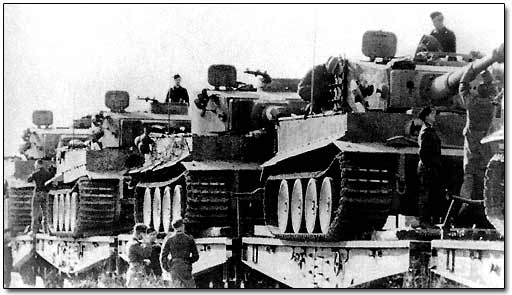
In the north, the entire 9th Army had been redeployed from the Rzhev salient into the Orel salient and was to advance to Kursk. But its forces could not even get past the first objective at Olkhovatka, just 8 km (5 miles) into the advance.
Demoralized German Soldiers
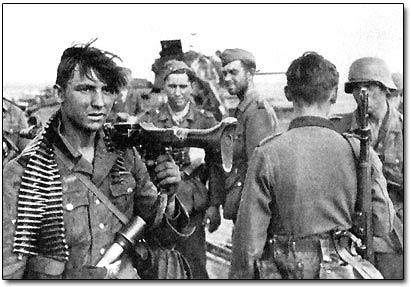
The 9th Army blunted its spearhead against the Soviet minefields, frustratingly so considering that the high ground there was the only natural barrier between them and flat tank country all the way to Kursk.
German Tanks Destroyed During a Battle at Olkhovatka
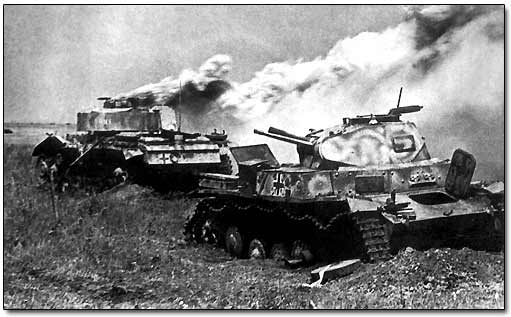
The southern offensive, spearheaded by 4th Panzer-Army with three Tank Corps made more headway. Advancing on either side of the upper Donets river on a narrow corridor, the SS Panzer Corps and the Großdeutschland Panzergrenadier Divisions battled their way through minefields.
Before the Battle of Kursk
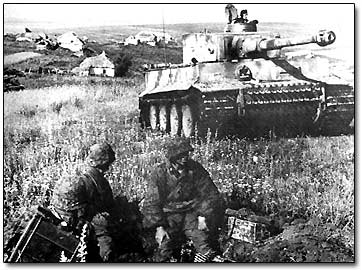
The German tanks got 25 km (15 miles) before encountering the reserves of the Soviet 5th Guards Tank Army outside Prokhorovka.
Russian Tanks and Troops Attacking
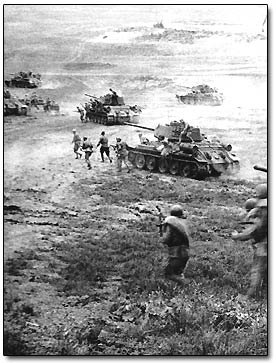
Battle was joined on July 12, with about one thousand tanks doing battle.
German Panzer Division Near Kursk
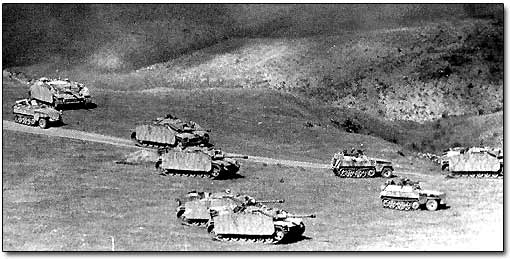
After the war, the battle near Prochorovka was depicted by the Soviet historians as the biggest tank battle of all time. The meeting engagement at Prochorovka was a Soviet defensive success.
Remains of German "Tiger" Tank Destroyed by Russian Tank T-34
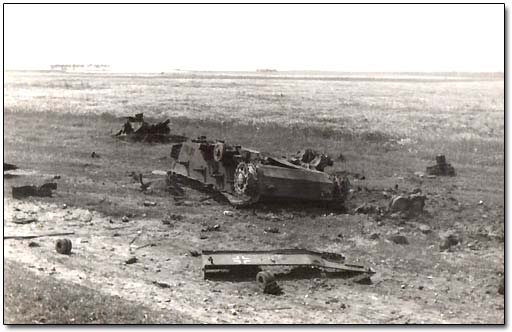
The Kursk offensive was the last on the scale of 1940 and 1941 the Wehrmacht was able to launch, and subsequent offensives would represent only a shadow of previous German offensive might. The Battle of Kursk cost Hitler over 500,000 troops and 1,000 tanks, forever hampering future war efforts on the Eastern Front.